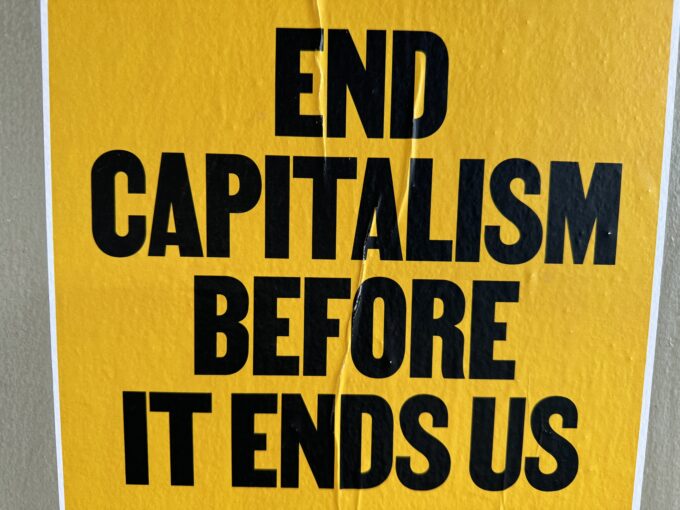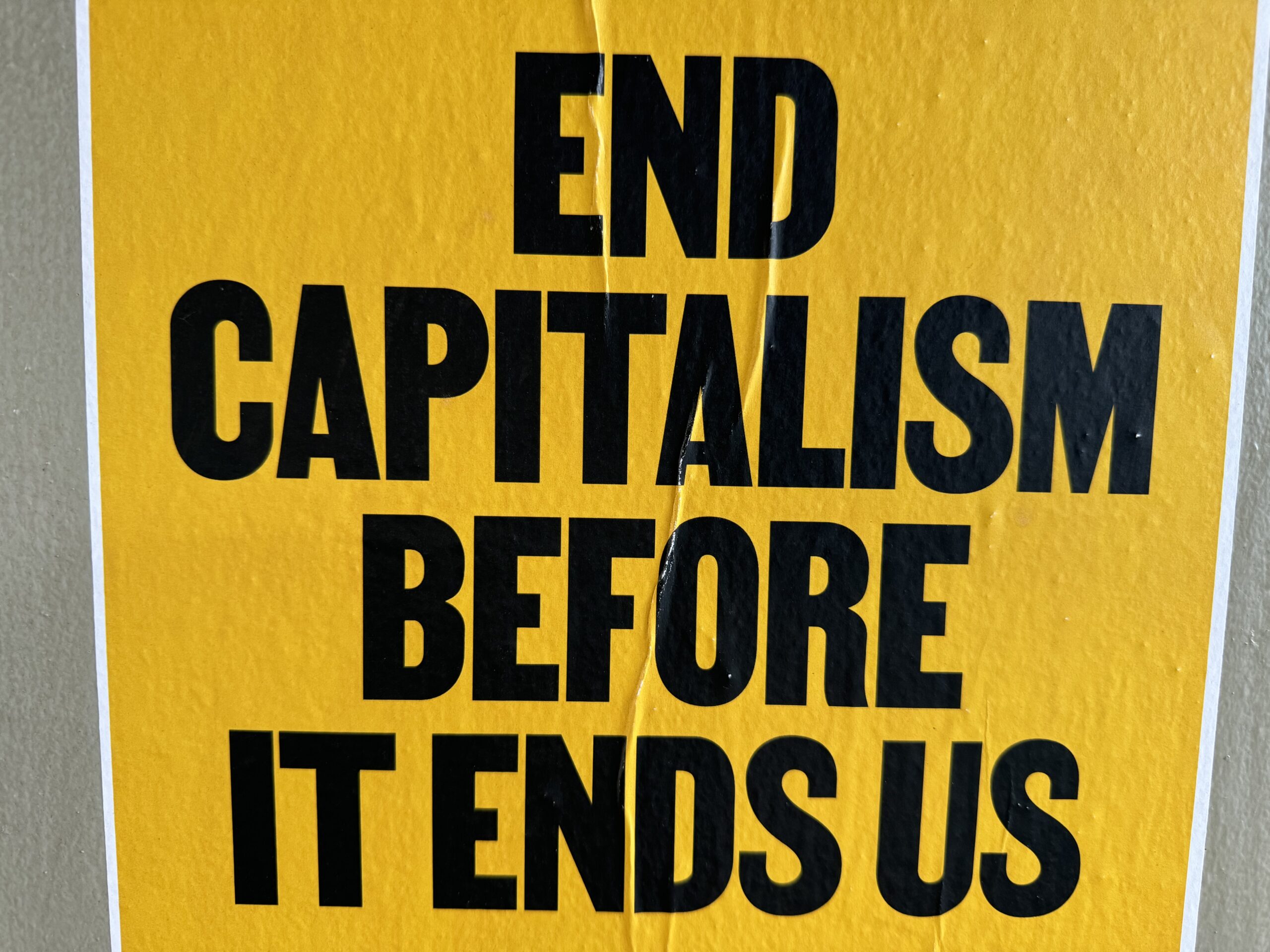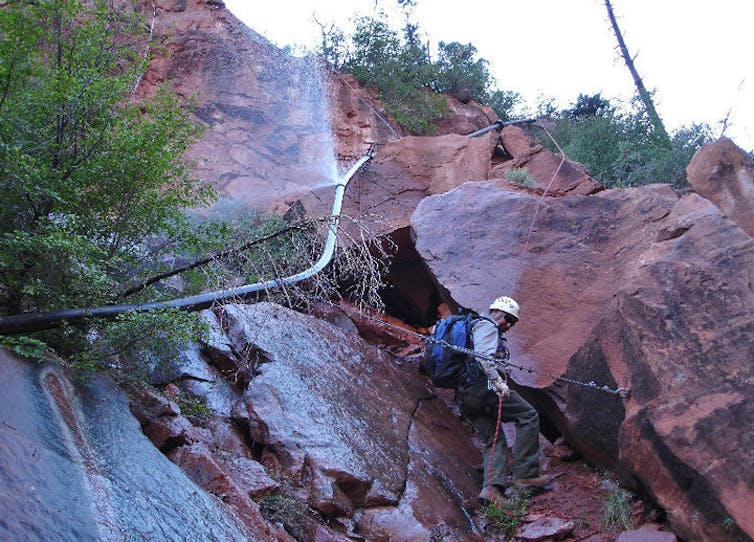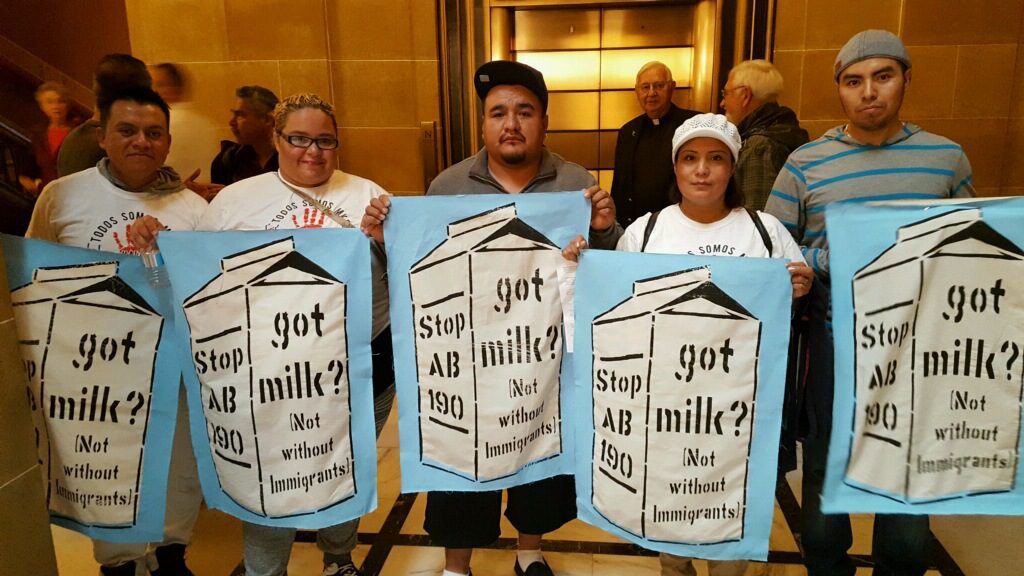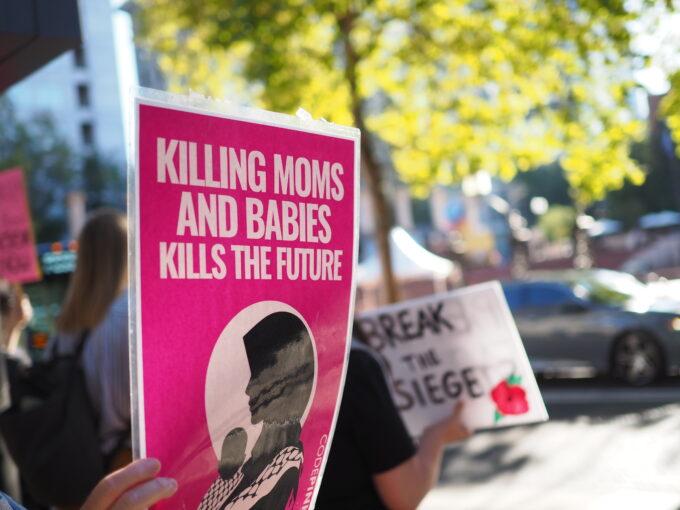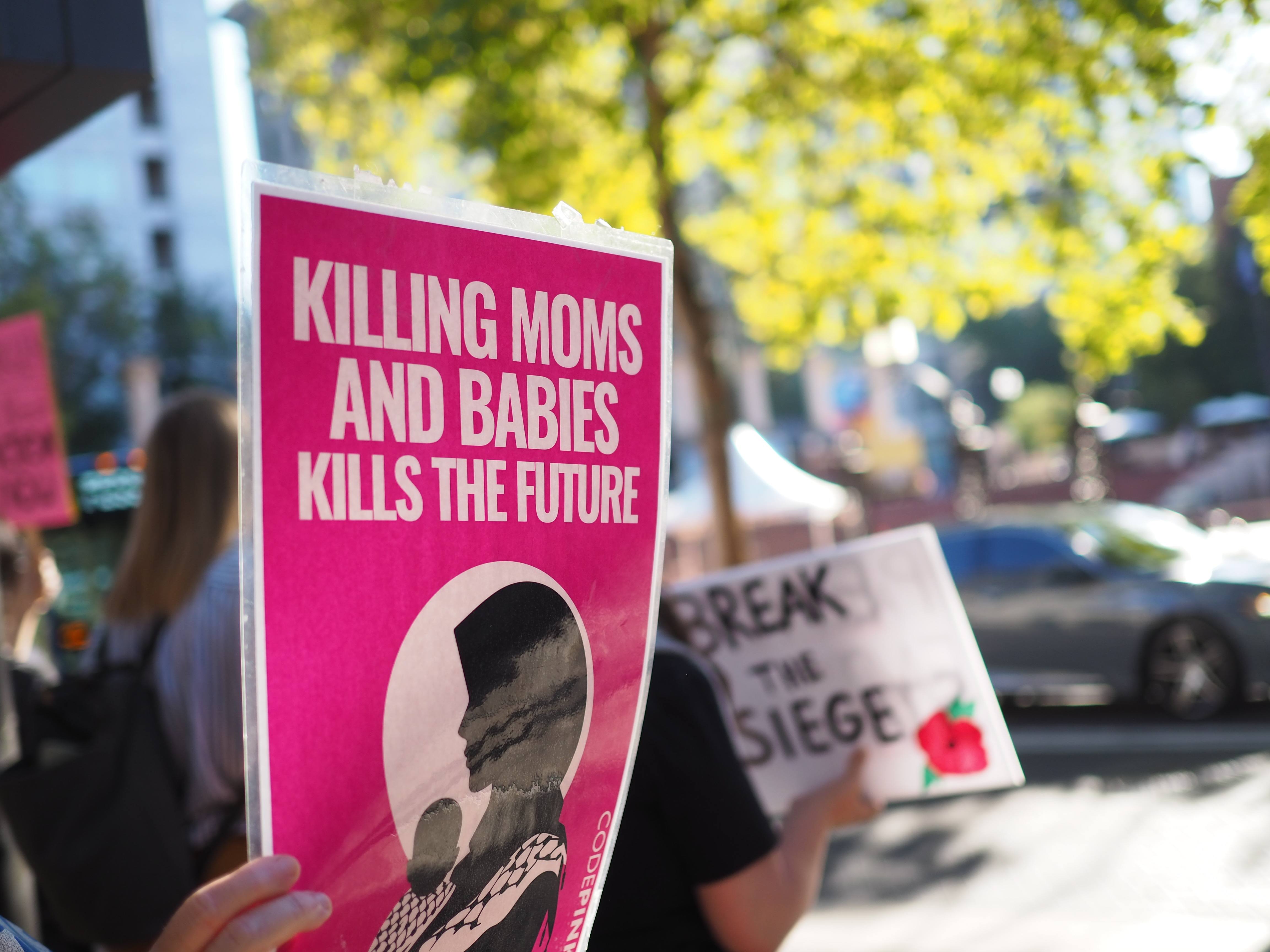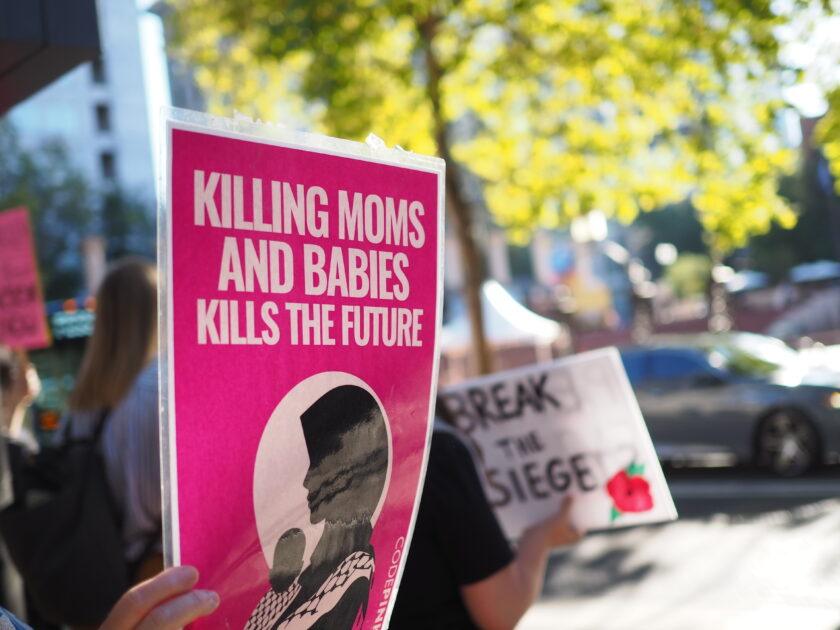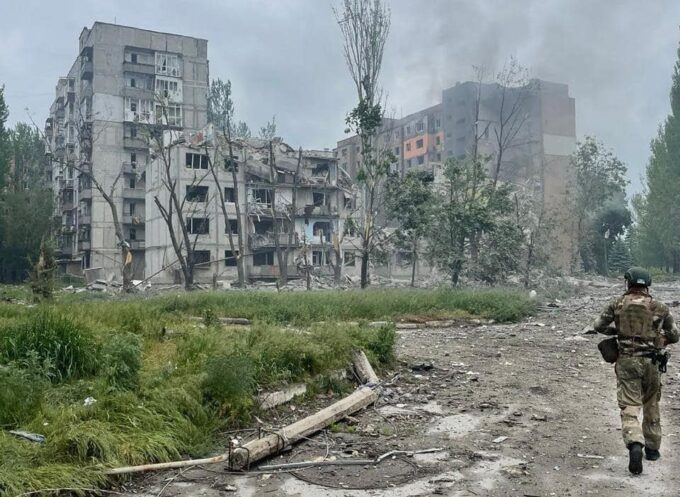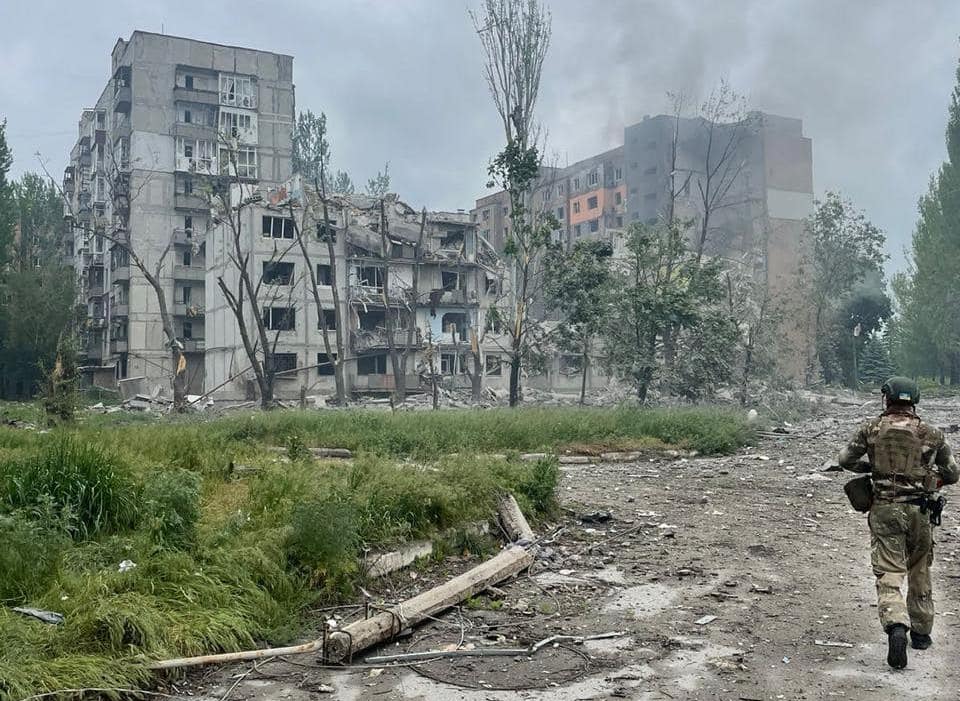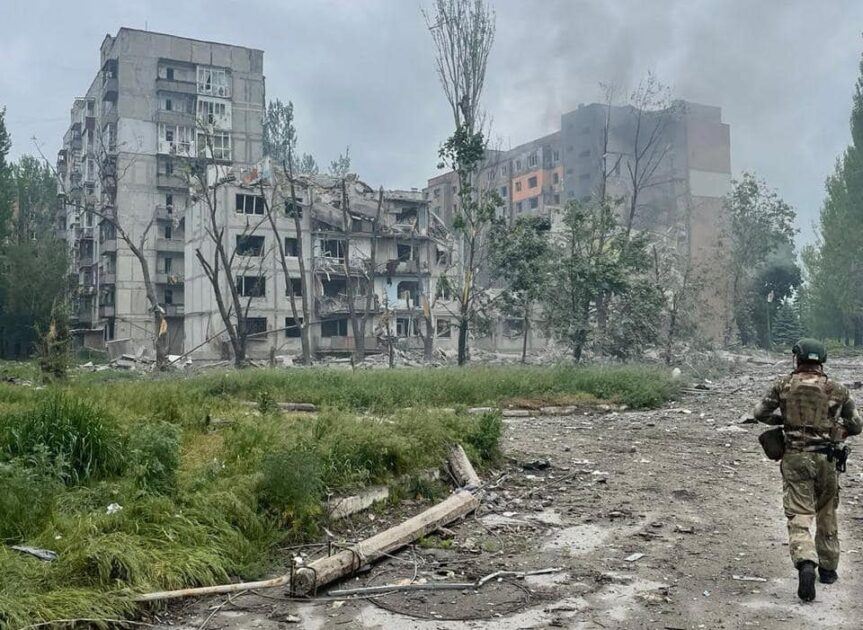Left News Wire
A leftist newswire providing commentary, opinion, and covering current events of the rapidly changing political and geopolitical economic landscape.
Welcome to Left News Wire on ibbit.at! Ibbit.at is an RSS Lemmy instance, meaning all posts created here are generated via RSS Feeds. This community is a collection of Leftist commentary, opinion, and news covering the current events of the rapidly changing political and geopolitical economic landscape.
Feeds
- https://www.commondreams.org/feeds/news.rss
- https://mronline.org/feed/
- https://peoplesdispatch.org/feed/
- https://truthout.org/feed/?withoutcomments=1
- https://www.workers.org/feed/
- https://mondoweiss.net/feed/
- https://theintercept.com/feed/?mk=fl_is_on_feature_page&mv=1
- https://thegrayzone.com/feed/
- https://inthesetimes.com/rss
- https://www.liberationnews.org/feed/
- https://www.counterpunch.org/feed/
- https://freedomflotilla.org/feed/
- https://redsails.org/rss.xml
- https://thetricontinental.org/feed/
- https://www.congress.gov/rss/presented-to-president.xml
- https://www.nakedcapitalism.com/feed
- https://www.scmp.com/rss/91/feed
- https://worldbeyondwar.org/feed/
- https://thered.stream/feed/
- https://micahflee.com/rss/
- https://www.liberationschool.org/feed/
- https://www.disconnect.blog/feed/
- https://damagemag.com/rss/
Canada
- https://thenorthstar.media/feed/
- https://breachmedia.ca/feed/
- https://socialistaction.ca/feed/
- https://pvonline.ca/feed/
UK
Substacks
- https://socialismforall.substack.com/feed
- https://www.historicly.net/feed
- https://kdwalmsley.substack.com/feed
- https://thisamericanleft.substack.com/feed
- https://benburgis.substack.com/feed
- https://millennialchaos.substack.com/feed
- https://globalsouthperspectives.substack.com/feed
- https://azovlobby.substack.com/feed
- https://equalityalec.substack.com/feed
Youtube Channels:

Photograph by Nathaniel St. Clair
The famous quote by Italian Marxist philosopher Antonio Gramsci seems to have been written for the moment humanity is currently experiencing: “The old is dying, and the new cannot be born. In this interregnum, monsters arise.”
The world is going through a civilizational crisis in which the neoliberal capitalist order, although mortally wounded, continues to impose its predatory logic, that of the use of force and the resurgence of fascism, while emancipatory alternatives fail to consolidate. In this vacuum, monsters proliferate: wars and attempts at recolonization, climate crisis, structural hunger, collapse of multilateralism and international law placed at the service of the world’s powers that be.
Capitalism and its “Terminal Crisis”
According to Brazilian theologian Leonardo Boff, the globalized capitalist system has been showingterminal signs for more than a decade: the obscene concentration of wealth, parasitic financialization, planetary catastrophes, and the precariousness of life have led to this crisis, but it has not been strong enough to finally bury this system. Western imperialism—today embodied in NATO and its imposition of increased war budgets on member countries, in the US economic war, especially against China, and in the European Union’s sanctions against Russia—can no longer flaunt itself as before, but it refuses to die. Its decline is evident in global inflation, the return of Cold War geopolitics, and the rise of neo-fascisms as fictitious “solutions” to inequality.
Is the left also in crisis?
While capitalism seems to be moving towards its decomposition,the left is unable to articulate a hegemonic project. Progressive experiences in Latin America face economic siege, blockades, unilateral coercive measures and judicialization, divisions and popular demobilization; European social democracy is surrendering to neoliberalism and anti-capitalist alternatives still lack global strength. Fragmentation and what appears to be a lack of strategies in the face of new forms of domination (such as the digital divide, corporatist government, and the rule ofBig Tech) weaken the possibility of the emergence of a new order.
The monsters of the “interregnum”
In this historical limbo, crises are multiplying:
Wars and neocolonialism: Ukraine, Palestine, Sudan, the Sahel, conflicts where resources are plundered under the rhetoric of “defending democracy” or simply betting on chaos and the disappearance of states.
Environmental catastrophe: Capitalism has turned nature into a “commodity,” and now the planet is suffering countless fires, floods, and desertification.
Hunger and inequality: The1% owns more than the 99%, while the UN reports that735 million people suffer from chronic hunger, billionaires break records in profits and gain support from media corporations andpoliticians.
The failure of international law:The International Criminal Courtprosecutes Africans but ignores the crimes of Israel and the US, while the Security Council has become aveto club. Furthermore, reform of the United Nations has become a key issue for the Global South, as seen at the last BRICS meeting in Rio de Janeiro, Brazil.
Criminalization of migrants: In the first six months of his second term, President Donald Trump has launched a strong public campaign against the presence of migrants, especially Latin Americans, in the United States. This campaign has also been the basis for an aggressiveanti-immigration policy that ranges from the revocation of programs such as Humanitarian Parole, the cancellation of Temporary Protected Status (TPS), mass deportations,family separation, and the removal of infants from their parents, to the establishment of ahighly sophisticated international prison system that violates human rights.
However, this policy is not exclusive, nor was it initiated by the Trump administration, as noted in the testimony ofGladys Caricote, one of the Venezuelan women deported from the United States to Venezuela. In her testimony, she details the discriminatory policy of US governments after being held in an immigration detention center (ICE) for more than 10 months, which means that it was under the administration of Joe Biden, the 46th President of the United States (Democratic Party, 2021-2025), when this restrictive policy towardsmigrants from Venezuela was tightened.
Is there a way out?
What is needed to build alternatives? How can the Global South help? Is there any point in creating new forms of democracy, popular organization, and class internationalism?
The BRICS summit held in Rio de Janeiro, Brazil, on July 6 and 7 was a key event, as it represented a counterweight to the Western-dominated economic and political order, Similarly, its progressive expansion (in 2023-2024, the BRICS accepted new members such as Egypt, Ethiopia, Iran, Saudi Arabia, and the United Arab Emirates), despite differing criteria among member countries on this issue, has meant greater representation for the Global South, even if it is not without tensions, such as Brazil’s opposition to Venezuela’s entry.
This summit, which issued a126-point declaration, wasquickly responded to by President Donald Trump, who described the proposal to de-dollarize the group’s economic transactions, promoting payments in local currencies and mechanisms such as the New Development Bank (NDB), as a threat to the United States and threatened to increase tariffs on countries that support this action.
Another important event, highlighted in the final declaration of this meeting, was thesession of the Civil Council, which the movements present in Brazil have called the “BRICS People’s Council,” promoted at last year’s meeting in Kazan, Russia, as a Civil Forum, even though it is not institutionalized in any instance of the political bloc. However, the potential of this Council, not only for the BRICS countries themselves, but also for our countries in the South, is summed up in the reading of the Council’s consensus statement by João Pedro Stedile, of the National Coordination of the Landless Rural Workers’ Movement (MST) and the Political Coordination of ALBA Movements, who summarized that “the formal participation of the People’s Council is historic because it consolidates a method. Everyone agrees that the problems facing the peoples will not be solved by government initiatives alone.” However, everyone seems to be clear that it will not be an easy process, given that the rotating presidencies of the group determine the approaches.
Next year, the presidency will go to India, which may have a different view of the role of popular organizations in BRICS, but the important thing is that it is already a decision of the popular organizations to accompany this geopolitical instance as an alternative to the crises already raised, this being another way in which popular movements and organizations are standing up to the monsters that have emerged at this stage, as they have also done with mass actions against the attacks on Iran, Israel’s extreme violence in Gaza and throughout Palestine, the kidnapping of migrants, in defense of the sovereignty of the Sahel countries, etc.
This article was produced byGlobetrotter.
The post The Monsters of the Global Crisis Interregnum appeared first on CounterPunch.org.
From CounterPunch.org via this RSS feed
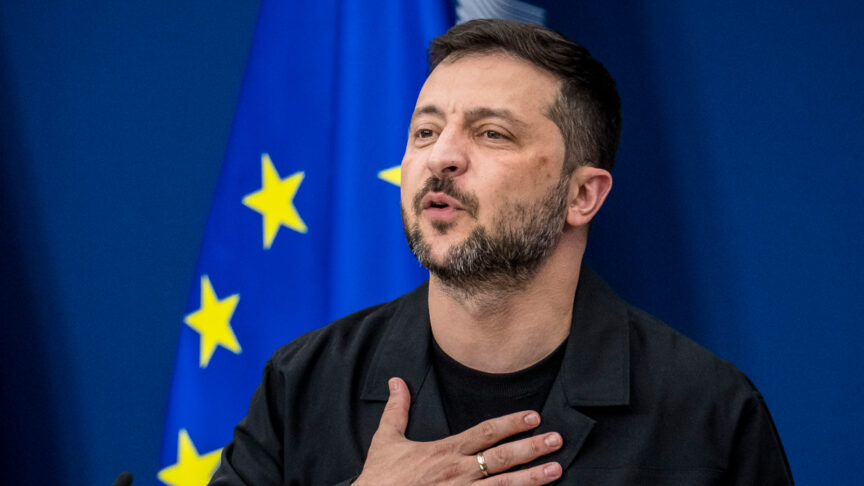
Zelenskyy and EU leaders prepare for a crucial meeting with Trump.
Plus: UK CEOs offered their third pay rise in a row, Zarah Sultana’s opinion on Labour under Corbyn, and Sally Rooney vows to use BBC royalties to back Palestine Action.
With: Michael Walker, Ash Sarkar, Anatol Lieven & Luke Hildyard.
From Novara Media via this RSS feed
Photograph Source: The U.S. Army – Public Domain
As I write, US Marines and National Guard have been dispatched to Los Angeles, Florida, the District of Columbia and elsewhere, allegedly to help the local police enforce civil law. When asked, What’s wrong with that? Many people’s first answer is, Because it’s against the law. Of course, that’s important, but not as decisive as it sounds. The law usually cited, the Posse Comitatus Act, says that the use of the military to enforce civil law is not permitted unless Congress permits it. OK, this hopefully prevents the military from granting itself these powers: only Congress can decide that. What Congress ought to decide, the question, “What’s wrong with that?” is left unanswered.
Some people say that in American history, the military has never – or almost never – been used to enforce domestic civil law. This is not accurate. The year the Posse Comitatus Act was enacted, 1878, was just one year after President Rutherford B. Hayes brought the post-Civil War Reconstruction project to an official end (March 4, 1877) by ordering the withdrawal of the last of the US Army units from the South, where they had served as the Military Government for 12 years. 1877 was also the year of the Great Railroad Strike, during which the Army and the National Guard were regularly called in as strikebreakers, and more than once fired into crowds. We can be sure that the authors of the Posse Comitatus Act were acutely aware of these momentous events.
And we can read those lawmakers’ ambivalence in the ambiguity built into the law. On the one hand, there is the temptation of military power. The Congress didn’t want to rule out domestic use of military force altogether: maybe, just maybe, the army can get something useful done more quickly and efficiently than if it’s left up to the politicians and bureaucrats. Well, the Civil War did get the country put back together again, though at a horrendous price. But most historians agree that Reconstruction, carried out under military rule by the Union Army, mostly failed, producing the Jim Crow subculture that is reasserting itself under the Trump Administration today.
Similarly, the use in 1877 of Army and National Guard troops (plus scabs, Pinkertons, militia, etc.) may have prevented an American version of the Paris Commune, but failed to produce a docile working class or silence the labor movement.
So there is the purely practical question: using military force, whether for the commendable purpose of guaranteeing political and human rights to the newly freed black people of the South, or for the less commendable purpose of crushing the workers’ movement in the North, simply might not work – in fact, might backfire.
But aside from that, using the military to do police work produces a deeper effect – you could call it a side effect except that it might turn out to be the main effect: that of decisively altering the country’s form of government.
As Political Science 101 classes teach, the state is defined as the social organization that monopolizes the right of legitimate violence. Where does it get that right? One simple answer is to win the war. What war?
For want of a better term, we can call it the Primal War of the State: the war that a state fights with its people, or part of its people, in order to establish itself as a state.
Another answer, less simple, is that the state gains this right of legitimate violence, and is therefore a state, by the consent of the people.
The above two are simplified theoretical models; actually existing states are mostly complex mixtures of the two principles, with liberal democratic states striving to emphasize the element of consent, and military dictatorships sometimes in actual war with (some of) their people and sometimes holding them in a state of “peaceful” submission, which is one form that the state of war can take. (There are many countries whose militaries are not strong enough defeat any of their neighbors, and whose only purpose is the “pacification” of their own subjects).
In a liberal democracy, both the law enforcement forces (police and judiciary) and the military are empowered by the state’s right of legitimate violence. Members of both are permitted to use physical, including lethal, force against people. But the circumstances under which they may do this, and the rules they must follow, are entirely different.
In the United States and other countries that follow the tradition of the Magna Carta, police may use force against a person who is in the act of committing, or is suspected of having committed, a crime, no one may be imprisoned or otherwise punished except by due process of law, and if the prosecutors can’t show plausible evidence that the arrested person did something illegal, that person must be released (Habeus Corpus).
“Due process” means that the civil authorities can legitimately use violence (arrest, imprisonment, punishment) against people in response to something they have done.
Soldiers are required to obey no such rule. Their job is to kill people not in response to what they have done, but according to who they are, namely, enemy soldiers. As long as they are wearing the enemy uniform (or as a practical matter, if they are non-combatants who happen to have got between you and the enemy) you can kill them without violating the law. The policeman’s job is to arrest suspects and turn them over to the judiciary for trial; they are not empowered to administer punishment on the street (though many police in the US seem uncomfortable with that rule). Soldiers are not trained in criminal investigation, crowd control, or arrest techniques. Rather, their orders are to “destroy the enemy”, the more the better. Especially in a crowd control situation, it’s not surprising if an angry crowd can begin to look, to a soldier, like the “enemy”, a disorderly situation can begin to take the form of war, and the government to take the form of military rule. There is no reason to believe that the Trump Administration is unaware of this. On the contrary, that seems to be the point.
The post Why Not Use the Army? appeared first on CounterPunch.org.
From CounterPunch.org via this RSS feed

Image by Salvador Rios.
Like many people, I woke up early last Tuesday morning to find an excited post in my Facebook news feed from the Teamsters: “At 11th Hour, UPS Bows to Teamsters Strike Threat in 7 States.” It boasted that the union has flexed its muscles and that UPS capitulated:
United Parcel Service (UPS) bowed to a credible, coordinated strike threat authorized by the International Brotherhood of Teamsters around midnight after the union demanded the multibillion-dollar corporation cease multiple attacks on workers’ rights.
With picket lines ready to assemble in the early morning hours Tuesday across seven states, the Teamsters secured a handful of settlements from UPS on outstanding grievances as well as a first contract for newly organized workers. At the direction of General President Sean M. O’Brien, Teamsters were prepared to strike UPS at its largest air hub, Worldport, in Louisville, Ky., and across the Chicago area, and to extend picket lines to California, Massachusetts, Pennsylvania, Georgia, and Ohio if UPS did not retreat.
While the Teamsters appear to have walked away from the “strike threat” with a couple of things in hand: grievances settled and a first contract. But, moving the company to implement air conditioning in delivery vehicles and creating full time jobs appears to be as elusive as ever.
The Teamsters freely admitted in their post that:
Under Article 18 of the Teamsters contract, UPS is obligated to deliver at least 28,000 vehicles equipped with air conditioning. The upgraded language marked a significant win for delivery workers, who face extreme heat conditions for months on-end to ensure the company remains successful. Halfway into the agreement, UPS is woefully behind, having rolled out far less than 10 percent of the required new fleet.
“The enforcement of our national contract must now only heat up. We need all members ready to punch back at a moment’s notice,” O’Brien said. “The Teamsters demand that UPS make good now on delivering thousands of additional vehicles with air conditioning to our local unions in Zone 1, the hottest working environments for delivery drivers in the nation. UPS is fully and finally out of time to do right by our members. No more excuses, no more delays.
“No more excuses, no more delays” could be demanded of Teamsters’ General President Sean O’Brien. There have been several opportunities to strike UPS over the last three years but the union has balked every time, despite the bloviating rhetoric from the top leaders of the union.
Many Teamster rank and filers seemed baffled by the proclamation of victory over UPS in social media posts across the internet. Even on the official Teamsters Facebook page comments many UPS Teamsters were openly critical, if not contemptuous, for example:
“Sounds like none of the striking members knew there was a strike or a threat of one and it’s already settled
seems like some smoke and mirrors by the union to me.”
“Teamster bosses blowing smoke and lighting fires… but forgot to tell their members? So organized.”
“When were sleeper teams going to be informed about this so they didn’t inadvertently cross a picket line. Kinda wild that there was a strike being set up and nobody knew about it until it was resolved.”
“Only 43 states to go?!”
“World port was ready to strike??? That’s news to me lol”
While others expressed the hope that this was the first step in fighting the company, the record at UPS, up until now, is of the O’Brien leadership using social media as a substitute for collective strike action. Other who should know better, like the Teamsters for a Democratic Union (TDU), the former rebel rank and file group, now allies of O’Brien, rushed to his defense:
“The right to strike over deadlocked grievances is a powerful tool. But it has never been used until Sean O’Brien pulled the trigger this week. When UPS deadlocked a series of grievances, the IBT issued 72-hour strike notices in Denver, Toledo, and Louisville.
Members from the affected locals were dispatched to California, Pennsylvania, and other states to prepare to extend picket lines. Extensions were targeted at key chokepoints in the UPS network like the air hub in Ontario, Calif. Within hours, UPS management settled the previously deadlocked grievances on safety, seniority, and subcontracting in the union’s favor.”
But, no trigger was pulled.
Real vs. Threatening
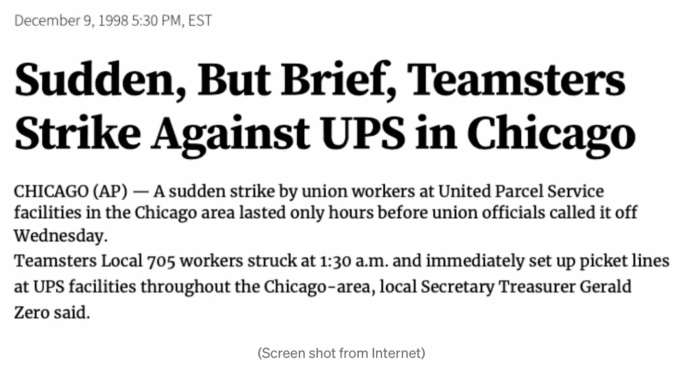
I know something about grievance strikes. On December 9, 1998, Teamsters Local 705 under the leadership of Jerry Zero called a grievance strike at UPS. The company had deadlocked on over four hundred and fifty grievances over supervisors doing union work. Transport Topics, the major freight industry newspaper at that time, reported:
“Teamsters Local 705 workers struck at 1:30 a.m. and immediately set up picket lines at UPS facilities throughout the Chicago-area, local Secretary Treasurer Gerald Zero said.
Strikers were called off the picket lines at 9 a.m. after talks were scheduled with management for later Wednesday on job assignments and overtime, local spokesman Paul Waterhouse said.
Mr. Zero said the union was upset with what it says is the continuing practice of UPS supervisors performing work that should go to union workers, robbing them of overtime opportunities. He said UPS supervisors average about 20 to 25 minutes of such work per shift, and he expected it to worsen over the busy holiday season.”
I have to say it was also a lot of fun, but it illustrates the difference between a real grievance strike and a fake one.
UPS also tried to use the opportunity to sow divisions in the membership. Shortly afterwards, during the following Christmas holiday, 705 Teamsters received a letter from then UPS Chicago District Manager Noel Massie condemning our strike as illegal and irresponsible. At Chicago’s Jeff St. Hub, where I worked, several of us handed out a response to Massie, in a semi-regular newsletter we called the “Brown Boxer,” after Christmas.
We wrote:
“Why strike? While UPS seems totally bewildered by why our union called a strike against them. The real issue is why they didn’t see it coming — the issues have been laid out clearly before them for the last six months. The union has 450 grievances over supervisors doing bargaining unit work that UPS agreed to comply with but continues to violate every day. Ultimately, our grievances have to be backed up by real muscle or UPS eventually tear-up our whole contract.”
Sound familiar?
The 1998 grievance strike by Teamsters 705 also took place in political context UPS announcing that it would not honor the full time jobs provisions of the contract won the year before in the historic strike, and the federal government’s witch hunt of the Teamsters’ General President Ron Carey, the only reformer ever elected to the leadership of the union. UPS was clearly testing Teamsters 705’s resolve and got punched in the face. Few other local unions, if any, followed 705’s lead.
The political context today is that Sean O’Brien is running for reelection, while UPS is carrying out a major offensive, closing over seventy buildings, laying off twenty thousand workers, refusing to create the jobs required by the contract and air conditioning package cars. The union appears to be a weak bystander to all of this, and O’Brien resorts to his methods of posturing and videos to make up for real collective action. At the same time, O’Brien deepens his alliance with the Trump administration as it eviscerates workers’ rights and trade unions.
Meanwhile, the suffocating heat and humidity continues to pose a serious health hazard for UPS’s vast workforce of package car drivers and hub workers across the country. Texas UPS driver Hayden Koenig made a heartfelt plea for help recently in the Texas Observer:
“There’s a good chance you heard about me on the news last year. I’m the UPS driver who almost died when I fainted at the wheel from heat exhaustion and crashed my truck into a tree.
I still work at UPS as a proud member of Teamsters Local 767. But if the company doesn’t keep its promise to give me A/C, there’s no telling if I’ll make it through another Texas summer.
When I think back to my accident, I can’t believe how lucky I was. That crash easily could’ve killed me or other innocent drivers and passengers. But who’s to say how long luck is going to win out? How many more lives does UPS need to endanger before they finally get their act together and deliver the protections we need from the heat?
For the sake of every UPS Teamster and anyone else on the road, let’s hope the answer to that question is zero. Rest assured, if UPS management keeps dragging its feet on A/C delivery, over 340,000 UPS Teamsters are ready to do whatever it takes to finally make it a reality.”
By a funny coincidence, I was being interviewed on the Rick Smith Show last Monday night before the non-strike happened. When I was asked if the Teamsters should strike UPS, I argued that the back-and-forth on striking or not had a corrosive effect on the members confidence in the union, and it was time to decide what kind of strike to hit UPS with. After all, workers’ lives are at stake.
The post The Teamsters’ Non-Strike at UPS appeared first on CounterPunch.org.
From CounterPunch.org via this RSS feed

Ash and Moya are joined by author and critic Sophie Gilbert to talk about the pornification of pop culture during the ’90s and ’00s – an era when riot grrl gave way to girl power, the supermodel was replaced by the waif, and feminist solidarity battled against tabloid body-shaming and Terry Richardson.
Sophie’s new book, Girl on Girl: How Pop Culture Turned a Generation of Women Against Themselves, is available from Penguin.
Seen our merch yet? The If I Speak Baggu bag is ethically made, comes in two colours and is available now from the Novara Media shop.
Send us your dilemmas: [email protected]
Music by Matt Huxley.
From Novara Media via this RSS feed

Lamar River, Yellowstone. Photo: Jeffrey St. Clair.
Anyone who drives around the state of Montana right now can see one unassailable truth: our state’ renowned rivers and the prized fish which inhabit them are in big trouble. From east to west, north to south our great rivers have withered to tiny ribbons of water, un-floatable for most recreation and uninhabitable for our native and prized trout species.
When rivers shrink, algae explodes and temperatures soar, as sunlight penetrates the water from top to bottom. As the algae decays, it consumes oxygen, turning what was a perfectly oxygenated, cold-water fish habitat into a hypoxic dead zone, where nothing can survive.
Anyone who has lived in Montana for more than a few seasons can tell: these symptoms are no longer rare events, happening every so often. Now, it seems, this is the new normal. Like many things in nature, the reason for our declining surface water supplies is multifaceted. Climate change is inducing drought, year over year, while demand for water soars as every inch of Montana is bought up and groundwater is given away for new development. Simultaneously, the state is allowing unlimited nutrient pollution through categorical exclusions from water quality protections. Where these political realities meet is at a dead river. Where they began is with Governor Gianforte’s Red Tape Initiative.
So what can the state of Montana do about it? We could start by enforcing the states’ public water rights, which have the exact legal purpose of protecting in-stream flows. That’s right – the state owns water rights and they are a part of the public trust, like our right of stream access. That means the state must protect those interests, above all else, or they violate our constitutional rights. Yet, in pursuit of its political pro-business agenda, the Gianforte administration is refusing to exercise these rights on our behalf. Instead, the very water that is supposed to be left in our rivers, is exploding out of private center pivots everywhere you look.
Since fish can’t sue, the Alliance for the Wild Rockies, Upper Missouri Waterkeeper and Save the Bull Trout are suing for the fish and also for people who recreate on our world class rivers. In Montana, like much of the West, water is property and that property is extremely valuable in our arid climate. Without question, ranchers have a right to use water but so to do the fish and the people of Montana.
The most valuable right the public owns is located where the Blackfoot River joins the Clark Fork River at the site of the former Milltown Dam.
The Montana Power Company was granted 2000 cfs for its water right when the dam was built in 1904 as an instream hydropower right to generate electricity. In 2008, the State of Montana acquired this very senior water right through the Upper Clark Fork River Basin Superfund settlement with the intent that the water right would be used to restore the fishery and recreational uses. Yet, during the hottest and driest period on record, when the famed Blackfoot river has been in the 0% percentile of flows all summer, Montana Fish Wildlife and Parks and Governor Gianforte have not enforced our rights.
This is but one example of the tragedy that is unfolding.
Simply put, our lawsuit alleges that Montana Fish Wildlife and Parks has a duty to enforce and protect its water rights by making a call to support minimum flows designed to protect aquatic life because state held instream flow rights are part of the public trust and thus the agency is constitutionally mandated to utilize them to protect our right to a clean and healthy environment.
Afterall, there is nothing more antithetical to a clean and healthy environment than a dead, dry river.
Please consider joining us to protect our rivers that are world famous, not just for fishing but also for floating and swimming.
The post The State of Montana is Failing to Protect the Public’s Water and Fish appeared first on CounterPunch.org.
From CounterPunch.org via this RSS feed
Human-read Marxist audiobook of Karl Marx's Das Kapital, Volume 1, Chapter 16: Absolute and Relative Surplus-Value (from the first English edition, 1887) by Socialism for All
Patreon ☭ https://patreon.com/socialismforall
BuyMeACoffee ☭ https://buymeacoffee.com/socialismforall
Bluesky ☭ https://bsky.app/profile/socialismforall.bsky.social
Discord ☭ socialismforall
Mastodon ☭ https://ioc.exchange/@socialismforall
Medium ☭ https://medium.com/@SocialismForAll
Reddit ☭ https://reddit.com/user/SocialismForAll
Soundcloud ☭ https://soundcloud.com/socialismforall
Spotify ☭
Substack ☭ https://substack.com/@SocialismForAll
TikTok ☭ https://www.tiktok.com/@socialismforall
Tumblr ☭ https://www.tumblr.com/socialismforall
Twitch ☭ https://twitch.tv/SocialismS4A
Twitter ☭ https://twitter.com/SocialismS4A
YouTube ☭ https://youtube.com/SocialismForAll
Socialism for All does not run ads on its material. Please consider becoming a financial contributor on Patreon or BuyMeACoffee today for as little as $2/month!
Text: https://www.marxists.org/archive/marx/works/1867-c1/
Basic Marxism-Leninism Study Guide Video Playlist: https://www.youtube.com/playlist?list=PLXUFLW8t2sntNn5jQO8vF7ai9x0fna3PV
S4A's Karl Marx's Capital (Das Kapital), Volume 1 YouTube playlist:
S4A's Karl Marx's Capital (Das Kapital), All Volumes YouTube playlist:
Timestamps:
0:00 S4A Intro
1:02 Chapter 16: Absolute and Relative Surplus-Value
28:44 S4A Closing & Credits
#s4a #socialismforall #socialism4all #revolution2030 #rev2030 #socialism #communism #marxism #marxismleninism #socialist #communist #marxistleninist #lenin #leninism #marx #economics #news #politics #antifa #antifascist #antifascism #audiobook #audiobooks #audiobooksrock #audiobooknarrator #history #theory #democracy #berniesanders #greenparty #left #lefty #demexit #democraticparty #democrats #democracia #philosophy #materialism #dialecticalmaterialism #historicalmaterialism #history #socialscience #socialstudies #economist #economictheory #economics #economy #capital #daskapital #manufacturing #society #industry #industrial #england #machine #machinery #industrialequipment #factory #agriculture #farm #farming
From Socialism For All / S4A ☭ Intensify Class Struggle via this RSS feed
A National Park Service worker assesses a split in an exposed section of the Grand Canyon’s fragile water lines in 2014. The water pipeline, installed in the mid-1960s, feeds water from Roaring Springs, located approximately 3,500 feet below the North Rim. Grand Canyon National Park via Flickr
As wildfire crews battled the Dragon Bravo Fire on the Grand Canyon’s North Rim in July 2025, the air turned toxic.
A chlorine gas leak had erupted from the park’s water treatment facility as the building burned, forcing firefighters to pull back. The water treatment facility is part of a system that draws water from a fragile spring. It’s the only water source and system for the park facilities on both rims, including visitor lodging and park service housing.
The fire also damaged some of the area’s water pipes and equipment, leaving fire crews to rely on a fleet of large water trucks to haul in water and raising concerns about contamination risks to the water system itself.
By mid-August, Dragon Bravo was a “megafire,” having burned over 140,000 acres, and was one of the largest fires in Arizona history. It had destroyed more than 70 structures, including the iconic Grand Canyon Lodge, and sent smoke across the region.
Wildfires like this are increasingly affecting water supplies across the U.S. and creating a compounding crisis that experts in water, utilities and emergency management are only beginning to wrestle with.
A pattern across the West
Before 2017, when the Tubbs Fire burned through neighborhoods on the edge of Santa Rosa, California, most research on the nexus of wildfire and water had focused on issues such as drought and how climate change effects ecosystems.
The Tubbs Fire destroyed thousands of buildings and also melted plastic water pipes. After the fire, a resident’s complaint about the taste and odor of tap water led to the discovery that the fire’s damage had introduced contaminants including benzene, a carcinogen, into parts of the public water system.
It quickly became obvious that the damage discovered at the Tubbs Fire was not unique.
Similar damage and pollutants were discovered in another California water system after the 2018 Camp Fire destroyed much of Paradise, a town of over 25,000 people.
The list of incidents goes on.
In southern Oregon, the 2020 Almeda Fire damaged water pipes in buildings, leaving water to flow freely. That contributed to low system pressure just when people fighting the fire needed the water.
 Water meters and pipes are vulnerable to damage during a fire.
Andrew Whelton/Purdue University, CC BY
Water meters and pipes are vulnerable to damage during a fire.
Andrew Whelton/Purdue University, CC BY
In Colorado, the 2021 Marshall Fire burned through urban water lines, damaging six public drinking-water systems along with more than 1,000 structures in the Boulder suburbs. All six systems lost power, which in some cases led to a loss of water pressure, hampering firefighting.
As firefighters worked on the Marshall Fire, water system operators raced to keep water flowing and contaminants from being transported into the water systems. But tests still detected chemical contamination, including benzene, in parts of the systems a few weeks later.
Then, in January 2025, the Los Angeles fires supercharged concerns about water and wildfire. As firefighters raced to put out multiple fires, hydrants ran dry in some parts of the region, while others at higher elevations depressurized. Ultimately, over 16,000 structures were damaged, leading to insured losses estimated to be as high as US$45 billion.
Water infrastructure is not merely collateral damage during wildfires – it is now a central concern.
It also raises the question: What can residents, first responders and decision-makers reasonably expect from water systems that weren’t designed with today’s disasters in mind?
Addressing the growing fire and water challenge
While no two water systems or fires are the same, nearly every water system component, ranging from storage tanks to pipelines to treatment plants, is susceptible to damage.
The Grand Canyon’s Roaring Springs system exemplifies the complexity and fragility of older systems. It supplies water to both rims of the park through a decades-old network of gravity-fed pipes and tunnels and includes the water treatment facility where firefighters were forced to retreat because of the chlorine leak.
Many water systems have vulnerable points within or near flammable wildlands, such as exposed pump houses that are crucial for pulling water from lower elevations to where it is needed.
In addition, hazardous materials such as chlorine or ammonia may be stored on-site and require special considerations in high fire risk areas. Staff capacity is often limited; some small utilities depend on a single operator, and budgets may be too constrained to modernize aging infrastructure or implement fire mitigation measures.
As climate change intensifies wildfire seasons, these vulnerabilities can become disaster risks that require making water infrastructure a more integral part of fighting and preparing for wildfires.
Ways to help everyone prepare
As a researcher with Arizona State University’s Julie Ann Wrigley Global Futures Laboratory, I have been working with colleagues and fire and water systems experts on strategies to help communities and fire and water managers prepare.
Here are a few important lessons:
Prioritizing fire-resistant construction, better shielding of chemicals and, in some cases, decentralizing water systems can help protect critical facilities, particularly in high-risk zones. Having backup power supplies, mobile treatment systems and alternate water sources are essential to provide more security in the face of a wildfire.
Emergency command protocols and interagency coordination are most effective when they include water utilities as essential partners in all phases of emergency response, from planning to response to recovery. Fire crews and water operators can also benefit from joint training in emergency response, especially when system failure could hinder firefighting itself.
Longer term, protecting upstream watersheds from severe fire by thinning forests and using controlled burns, along with erosion control measures, can help maintain water quality and reduce water pollution in the aftermath of fires.
Smaller and more isolated systems, particularly in tribal or low-income communities, often need assistance to plan or implement new measures. These systems may require technical assistance, and regional support hubs could support communities with additional resources, including personnel and equipment, so they can respond quickly when crises strike.
Looking ahead
The Dragon Bravo Fire isn’t just a wildfire story, it’s also a water story, and it signals a larger, emerging challenge across the West. As fire seasons expand in size and complexity, the overlap between fire and water will only grow.
The Grand Canyon fire offers a stark illustration of how wildfire can escalate into a multifaceted infrastructure crisis: Fire can damage water infrastructure, which in turn limits firefighting capabilities and stresses water supplies.
The question is not whether this will happen again. It’s how prepared communities will be when it does.
This article is republished from The Conversation under a Creative Commons license. Read the original article.
The post Grand Canyon’s Dragon Bravo Megafire Shows the Growing Wildfire Threat to Water Systems appeared first on CounterPunch.org.
From CounterPunch.org via this RSS feed
On January 20th, Donald Trump returned to the Oval Office with — at least in his mind — an aura of invincibility. A fully compliant Congress was controlled by Republicans who were, in turn, controlled by him. Conservative justices, three of whom he had appointed, dominated the Supreme Court. The defeated opposition, the Democratic Party, seemed distinctly befuddled and weak.
Trump then smashed and bullied his way through his first 100 days, ruling via dictator-like decrees — executive orders — and carrying out retribution at every turn. Democracy’s redlines were crossed daily and his MAGA base remained passionately loyal even as the rest of the nation soured watching him do little to make the country better.
However, his “realignment” was never faintly as broad or as solid as he pretended it was. For example, while he made gains with Black voters in the 2024 election, rising from 8% in 2020 to 15%, the last six months have seen a dramatic change in that support. In January 2025, according to a YouGov poll, Black Americans’ disapproval of Trump was at about 69%. By June, it had risen to about 85%. Through it all, however, his support among Republicans continued to hover between 88% and 95%.
Then, of course, came the Jeffrey Epstein crisis. Trump himself seeded conspiracies surrounding the dead pedophile and his accomplices at rallies and in social media postings. He minimized his 20-year friendship with both Epstein and his girlfriend (and convicted child trafficker) Ghislaine Maxwell, who is serving a 20-year sentence for her part in their horrific crimes. Trump, Attorney General Pam Bondi, and FBI Director Kash Patel each claimed at some point to have evidence that would expose a “deep state” cover-up in the case, while bizarre stories of global pedophile rings led by Democrats animated MAGA as much as Trump’s “build the wall” dreams.
The MAGA faithful were waiting for the deliverable. Trump, however, found himself trapped, knowing that he’s part of whatever materials exist and that he will not look good (whether he did anything illegal or not) if the Epstein files are actually released. His constantly changing excuses have spread dissent among his own worshipers and led a panicked Trump to throw out any shiny objects he could think of to change the subject.
Pay Attention to the Shiny Object Over There
On July 21st, as part of his Epstein Distraction Campaign, Trump released more than 230,000 pages of FBI and government files related to Martin Luther King Jr.’s assassination on April 4, 1968. The more than 6,000 files include FBI documents related to the killing, most of which are not new, according to experts who have reviewed them. They do not, however, include the agency’s nefarious wiretaps of King that are scheduled for release in 2027. There was, of course, neither rhyme nor reason to Trump’s dispersal of those files at that moment.
The president’s claim was that he was keeping a promise he had made when he returned to the White House in January. Within a few days of being in office, on January 23rd, Trump issued Executive Order 14176 with instructions for the declassification and release of files related to the assassinations of King, John F. Kennedy, and Robert Kennedy. It was a feint at transparency meant to feed the anti-federalist conspiracists in his base. For decades, a cadre of Americans has believed that there was a government-backed coverup of those killings. In the modern era, the “deep state” adherents of MAGA world and online extremists have indeed kept those fantasies circulating.
Martin Luther King III and Bernice King, the surviving King children, were advised of the release and opposed it. They then issued a statement that read in part, “While we support transparency and historical accountability, we object to any attacks on our father’s legacy or attempts to weaponize it to spread falsehoods. We strongly condemn any attempts to misuse these documents in ways intended to undermine our father’s legacy and the significant achievements of the movement.” Bernice would later post on social media, “Now, do the Epstein files,” making it clear that she was not fooled by Trump’s flaccid bait-and-switch game. Of course, privacy concerns and an ideological assault on their father and his legacy have little meaning for Trump as he tries to escape his Epstein crisis by any means necessary.
What the King family, scholars, and followers of Martin Luther King Jr.’s legacy are legitimately worried about is that the content of those files may serve to reenergize the long and shameful history of the FBI’s attacks on the late civil rights leader. Under the dictatorial rule of then-FBI Director J. Edgar Hoover, the agency surveilled, wiretapped, and harassed King and other Black leaders relentlessly during his lifetime.
It was the FBI that tried to convince King to commit suicide. It was the FBI that sent information to news outlets accusing King of being controlled by communists. It was the FBI that fostered conflicts and divisions both among Black activists and between the Civil Rights Movement and White allies. Accusations of womanizing were issued to newspapers to embarrass and discredit King. The purpose, as clear as a bell, was to destroy him, his leadership, and the movement.
More broadly, the FBI’s Cointelpro (counter-intelligence program), which officially lasted from 1956 to 1971, sought to annihilate movements for justice, fairness, democracy, peace, and inclusion in the 1950s and beyond. Lives were ruined and campaigns suffered setbacks for exercising legitimate and constitutionally protected free speech and protest rights. Despite the exposure of its many, many crimes, for the most part, neither the FBI nor Hoover was held accountable for what they had done. Hoover, in fact, died of a heart attack while still director in May 1972.
Investigations by scholars and even Congress have since uncovered a wide range of illegal and unethical behavior by the federal government as it sought to disrupt and destroy the civil rights and other movements of the period. It would be decades, however, before the FBI itself offered anything close to an apology, let alone any effort to repair the carnage it had wrought.
When James Comey assumed the role of FBI director in 2013, he made a bit of a mea culpa. In his inaugural speech, he called the agency’s treatment of King “abuse and overreach,” an appropriate (if exceedingly mild) acknowledgement and rebuke of its deplorable and criminal conduct toward him and other racial and social justice activists. And as the American Civil Liberties Union (ACLU) noted in “Unleashed and Unaccountable, The FBI’s Unchecked Abuse of Authority,” a report released at that time, the agency’s violations of rights were then still continuing, particularly against people of color, immigrants, and Muslims.
The current FBI director, Trump loyalist, and true believer Kash Patel is seen as anything but a friend of civil rights and civil liberties. Besides being unqualified for the job, having never served in a serious senior law enforcement position, he’s an election denier and an advocate of Trump’s desire for retribution against his perceived enemies. Prior to becoming FBI director, he had published his own enemies list. His nomination as director was denounced by the ACLU, the NAACP, the National Organization for Women, the Southern Poverty Law Center, and many other civil rights and civil liberties organizations.
With Trump’s blessing (essentially orders), Patel began purging the FBI of agents and investigators who had worked successfully on cases involving the pro-Trump January 6, 2021, assault on the Capitol and others simply seen as not sufficiently MAGA or supplicant enough to the president. His job is to crush the bureau as part of a Trumpian revenge fantasy, while weaponizing its authority for political purposes. If there is information in the released King documents that might embarrass the FBI, so be it. But there is little doubt that the Epstein files, which could actually put Trump in a compromised position, even though his name has reportedly been redacted in them, will never see the light of day.
Whatever may or may not be in the files Trump did release, it’s a stretch to believe that his concern in releasing them had anything to do with truth and openness regarding what happened to King or the Kennedys, rather than a distraction from his own situation. In fact, Trump has failed to criticize in any fashion the MAGA supporters who have been on an anti-King rampage in recent years. His feral sense of survival tells him that King is too much of an icon to go directly after him, while quoting him on occasion is a way, however superficial, of trying to win more Black support.
King Under Far-Right Attack
It’s been quite a different matter for other significant MAGA figures. In such an anti-diversity, equity, and inclusion (DEI), anti-woke era, Trump-loving far-right activists have, in fact, repeatedly and viciously attacked King. Typically, for instance, in December 2023, Charlie Kirk, founder of the far-right Turning Point USA (TPUSA) and frequently seen with Trump, insisted that King’s reputation was overblown and that he was “awful” and “not a good person.” In particular, he called the passage of the 1964 Civil Rights Act (CRA), the result of one of King’s most significant and defining campaigns and a giant step forward for the nation, a “huge mistake.” In his view, the CRA established a “permanent DEI-type bureaucracy,” a perspective that perfectly fits Trump’s ongoing blitzkrieg against all the accomplishments of the Civil Rights and racial justice movements.
Nor is Kirk faintly alone. Other TPUSA associates and allies have joined his crusade. Far-right activist Blake Neff, an associate of Kirk, typically has accused King of not really being a “peaceful activist,” but actually advocating for an activism that became “a very violent thing.” Naturally, Neff provided no evidence to back up such an assertion.
Yet another TPUSA spokesperson, Andrew Kolvet, has also fed such attacks. In an email, for instance, he wrote: “A core part of this fake history of America is the elevation of MLK into a saint, whose entire being is beyond reproach and above question. This sanctified version of MLK strips away his actual views and ignores his actual actions.”
In the past, like many conservatives, including Trump, they also sometimes misappropriated King’s words to attempt to deradicalize him. Kirk used to refer to him as a “hero” and the TPUSA website sold a T-shirt with King’s name and stickers that had King saying, “Let freedom ring.” But that was yesteryear.
Some Black MAGA personalities pushed back against Kirk, including Reverend Darrell Scott, who called him “an a-hole” and “[a racist](https://www.mediamatters.org/charlie-kirk/pre-cpac-war-room-event-conservative-strategist-raynard-jackson-seemingly-attacks?page=2#%3A%7E%3Atext=%27%E2%80%9D+%28The+panel+of+co%2CKing+a+%E2%80%9Cbad+guy.%E2%80%9D&text=A+recent+NBC+News+report%2Cboy%27s+a+racist+right+there.%E2%80%9D%29.%E2%80%9D Scott was a high-profile Black advocate for Trump, especially during his first term, and remains loyal to him. He charged that Kirk wants to bring “white superiority attitudes” back to the Republican Party. Scott, of course, has long ignored or excused Trump’s attitude of “white superiority.”
Conservative media personality Armstrong Williams, who has kept a bit of distance from Trump, also criticized Kirk. He suggested he do more reading on U.S. and Black history.
However, Black far-right condemnation was anything but universal. Chicago-based MAGA promoter Bishop Aubrey Shines and TPUSA Director of Black Outreach Pierre Wilson both went on Kirk’s podcast defending his attacks on King, insisting Kirk was not a racist, and adding their own venom to the mix. Wilson, for instance, stated, “Maybe just maybe he’s not the hero that everyone said he is.”
The Anti-King Trump
In Trump’s second term, propelled by his all-in, full-spectrum anti-DEI agenda, there’s no longer any need for his followers to pretend there’s anything about Martin Luther King Jr., however distorted, that needs to be praised. The president’s efforts to roll back the twentieth century and overthrow everything King stood for have helped him forge allies with some of the most extreme elements in the nation. It’s always been the case for Trump that any positive mention of King was performative and meaningless. What matters now, however, are the actual policies and laws that Trump has promulgated, which are meant to wipe a King-like view of this country from the face of the Earth.
Although Trump was a teenager during King’s last years, there is no record of his participation in or concern for the civil rights and racial justice issues of that era. In fact, the only policy relationship to Blacks that he had then lay in the way he and his father violated the Fair Housing Act of 1968, which King had championed in his last days and which was passed by Congress and signed into law by President Lyndon B. Johnson on April 10, 1968, only six days after King was murdered.
In 1973, Donald Trump first broke into the news in New York and nationally when Trump properties in that city were sued by the Department of Justice for refusing to rent to African Americans. After a years-long court fight, a consent decree was signed in which Donald and his father, Fred Trump, admitted no guilt but were forced to change their rental practices. However, despite their denials, a later New York Times investigation “uncovered a long history of racial bias at his family’s properties, in New York and beyond.”
In our time, Trump’s attacks on civil rights and voting rights belie any rhetoric he may spew on King’s birthday or other occasions. In his first term, and with far less restraint the second time around, Trump has, in fact, sought to roll back decades of achievements in the areas of racial and social justice and democracy that King and so many others fought and died for. He’s taken a wrecking ball to institutions, programs, and policies throughout the federal government that were put in place to advance the full inclusion of people of color, women, the disabled, and the LGBTQ community. The attack on DEI is more broadly an effort to erase the hard-won gains that have evolved in the years from the passage of the post-Civil War 13th, 14th, and 15th Amendments to President Franklin D. Roosevelt’s New Deal to President Johnson’s Great Society to the Black Lives Matter uprisings, while establishing an unchallengeable fascist state and authoritarian presidency.
The pushback against the expansion of rights from Ronald Reagan’s presidency to the Trumpian moment confronted laws that were passed, policies put in place, agencies that were established, and sometimes weak but stable democratic structures that limited the harm that could be done — until, that is, the Trump and MAGA movement. After only six months in office the second time around, driven by numerous unlawful decrees, nearly every department and agency in the federal government has eliminated its civil rights enforcement division. Discrimination cases involving people of color have been dismissed. Laws to fight bigotry continue to go unenforced. As Nikole Hannah Jones wrote in the New York Times, the administration is sending “a powerful message to American institutions that discrimination will not be punished.”
Donald Trump would, of course, love for the debate to shift to what the FBI — “the deep state” — did to King, and to see liberals and conservatives alike spin off on that tangent and forget about his Epstein troubles, his failing and flailing tariff war, and the growing unpopularity of his Big Ugly Budget and his recission proposal. A significant part of his base, which he consciously cultivated to a cult-like fidelity, is righteously angered and demanding answers. His deflections when caught in a lie or a scandal have long worked to move past the immediate crisis, but maybe, just maybe, not this time.
This piece first appeared in TomDispatch.
The post A Presidential Wrecking Ball appeared first on CounterPunch.org.
From CounterPunch.org via this RSS feed
“No Hate in the Dairy State” – Family Farmers and Farm Workers Unite to Defend Immigrant Rights at WI State Capitol.
Since our organization, the Family Farm Defenders (FFD), began in the early 1990s, we knew that the fate of food and farm systems around the world are inexorably linked to one another. We witnessed how free trade deals uprooted people globally, depressing prices for all farmers thus destroying rural communities worldwide. Visits our members have taken around the world, including to Mali, the European Union, Brazil, and Mexico, among other places, have helped us understand the realities of farmers and farm workers, and how the health of our planet and one another are intricately linked.
This knowledge grounds our strong opposition to the Trump administration’s program of mass deportation. Facts and reporting show that the administration’s claim that they are “going after the worst first,” is a lie. We know that the mass, indiscriminate arrests of migrants, including of farm workers and day laborers, silences workers by terrorizing them. Not to help the country, mass arrests and detention lines the pockets of executives in the private, for-profit immigration detention complex, led by corporations like Geo Group and CoreCivic. Always central to Trump’s racist and dehumanizing rhetoric concerning migrants, his administration’s plans are different this time for their scale and intensity.
Meanwhile, most farm groups also denounce the plan to engage in mass deportations, because they view migrants – particularly farm workers – as critical inputs to their businesses as well as the food processing and distribution industry. We, too, understand that representation. It is a fact that there are more farm workers now than there are farmers (between 2 to 3 million of the former, under 2 million for the latter), and that without these laborers, about half of whom do not have legal authorization to be in the country, US farming would be in dire straits. Accordingly, some organizations promote visa reform, including plans to increase the H2A program, while others seek legal pathways for fish processing workers, and some advocate for undocumented people to receive driver’s licenses so that they can get to work safely.
But we emphasize that farm workers are more than inputs for businesses. Workers are members of our communities who have families and children. We share a common humanity regardless of where we were born, or the color of our skin. As people born in this country, citizens have done nothing to gain that privilege. We have passports that allow us to travel the world, while most others on this planet risk their lives to come here to work in dangerous, poorly-paid jobs just to have a chance of making a better living for themselves and their families. To tell migrants to “do it the right way,” or “like our ancestors did,” simply doesn’t make sense, because most do try to “do it the right way”.
We know the reasons why migrants, many of whom lack legal status, come to the US – global economic shifts and violence that they are not responsible for. The immigrants picking lettuce in California or milking cows in Wisconsin did not sign NAFTA when it came into force in 1994. Still, they felt its impact as their domestic markets were flooded with cheap goods, losing their way of life and ability to farm and feed their communities. To speak of law and order in this context is nonsense; the laws migrants break when they cross the border – many of whom came in the 1990s and 2000s – were passed in the 1950s and 1960s, at a time when migration to the US was virtually nil. The lack of real legal reform since then is the fault of our politicians, not immigrants.
A comparison to the Fugitive Slave law of 1850 is apt – just prior to the civil war, Congress’ passing of this law required that escaped slaves had to be returned to their owners if they made it to free states. As part of the abolition movement, many immigrant farmers and workers, along with local officials, actively resisted federal agents who were kidnapping people in their community. Similarly today, FFD supports the right of private citizens and government officials to NOT cooperate with ICE or other federal entities who are engaged in abusive and violent deportation activities.
Slavery and farm work in the US are not the same, although at times that may be the case. Instead, the larger point is that our laws need to be reformed. The reason people are in the US is not some nefarious plot to commit crimes, but to improve their economic realities. Moreover, the US depended on importing farm labor for over twenty years with the Bracero program (1942-1964). Before that, workers crisscrossed the border freely, as did Indigenous people. With the US’s system’s roots in the 1952 Immigration and Nationality Act, the H-2 program only really begins with the 1986 Immigration and Reform Control Act when then President Reagan created the H2A program for farm workers. But since its inception, this program has woefully understaffed farms – with just under 400,000 workers coming in 2024. Moreover, this program is rife with abuse, as various farm worker organizations have researched and noted. Farm workers also have their pay determined before arriving, with no rights to form a union or complain about working conditions.
Various legal reforms are possible in this context, including:
provide a path to citizenship for undocumented workers
reform visa programs and the asylum process to end abuse, and give the right to workers to form unions and collectively bargain over wages and improving work conditions
We also know that migrants crossing borders are not individuals seeking to commit crimes, but instead people trying to escape from a combination of social factors. Accordingly, we:
call for ceasefires at places where wars are currently waging, including with ending the use of food as a weapon
demand trade deals, global and/or regional, that respect worker and farmer rights, giving people the chance earn a dignified living where they live, rather than being the victims of corporate globalization.
Our organization respects the principles of food sovereignty, which includes striving for dignified work conditions for everyone in agriculture. Our government violates these principles when they terrorize workers with the threat of deportation, family separation or a return to the violence they hope to escape through migration. As our changing government policies show, they do not care either about the dignity of workers or farmers (as their export-first, slapdash agricultural policy makes clear). We will do everything within our power to defend the dignity of both farmers and farm workers.
The post Standing With Farm Workers and Calling Attention to the True Causes of the Immigration Crisis appeared first on CounterPunch.org.
From CounterPunch.org via this RSS feed
Photograph by Nathaniel St. Clair
Note: At the time of writing, a summary analysis similar to the one below was published Current Affairs, attributed to “Lex Syd.” There are a few differences in our sources and analyses, but the numbers are the same.
For a year and a half, whether we’ve noticed it or not, people who look at international news have read variations on the following sentence many, many times: “The Gaza Ministry of Health does not distinguish between civilians and combatants.” Its inclusion is so mindlessly automatic at this point that it keeps showing up in major media’s occasional articles on how many children the Israeli Defense Forces have killed, an obscene caveat suggesting that for all we know, most of these kids—even most of the pre-teenage kids—were justified targets.
It has made some sense to rely on the Ministry’s count as a baseline death toll, since it only includes recovered bodies, most of them identified by name. This is why every country, U.N. organization, international humanitarian organization, and mainstream media outlet uses it—even Israeli intelligence agrees with its numbers. But given the shocking pace at which the death toll in Gaza has climbed, it has seemed to genocide skeptics to demand a qualifier. So, early on in the war on Gaza, the “does not distinguish” sentence became an editorial incantation allowing a measure of disbelief in the livestreamed reality of the mass killing of civilians.
This obsession with ambiguity was at once very human — who wouldn’t prefer to see a reality where we weren’t complicit in a genocide? — and deeply inhuman, in its rote soft-pedaling of atrocities in which all Americans, as their primary suppliers and chief international supporters, have always been complicit. If the unbelievable numbers of unarmed people killed by one of our closest allies, with the active support of our own country—5,000 of them, and then very quickly 10,000, and 25,000, and then 30 and 40 and 60,000 people just like us and our families—if an indeterminate number of them were actually “combatants,” well, maybe this was was only, as so many supporters of the war on Gaza kept saying, the storm and fog of just another war. After all, the IDF had estimated, as the siege of Gaza began, that there were some 30,000 Hamas fighters in Gaza. Maybe a 30%, or a 40%, or even a 50% civilian death rate, many people apparently thought, was just the price that had to be paid for the realization of a fantasy that no one ever really believed was possible—the “eradication” of Hamas.
Wherever one has stood in relation to this open-ended spectrum of horror, the Ministry numbers have seemed to be something everyone could pretty much agree on, at least within the fringes of the discourse on Gaza. Unless you were so rabid to keep the death machine rolling that your first instinct was to call the unspooling names of dead children “Hamas propaganda,” or you were so certain that we were being forced into complicity in a genocide that you obsessively recalculated and posted the most probable real death toll (as I’ve done every month since the siege began), you saw the visible consensus: however many thousands, “according to the Gaza Ministry of Health, which does not distinguish between civilians and combatants.”
Yet virtually everyone who accepts that number also accepts that it must be an undercount of some significant but unknowable size. Since the Health Ministry only counts recovered bodies, every single unrecovered body is also uncounted. When we recall what the damage in Gaza looks like—massive bombs dropped on densely populated urban areas, generally with no actionable warning, usually with vague or expired location data and often without guidance systems anyway—it’s hard to avoid the question of how many people have died, quickly or in prolonged agony, whose bodies have never been recovered. Imagine for a moment that the greater New York metropolitan area were reduced to this, with virtually no one allowed to leave as it happened, nowhere to shelter, and with further bombing of the areas to which any internal refugees relocated, and you can begin to imagine how many human beings were hit so hard that there was nothing left to recover or identify; how many more could never be recovered, brought in to be identified, or counted; how many bodies were buried either anonymously, in cemeteries since razed flat by the IDF, or in the mass graves it has dug; how many families had no members left alive to report the dead.
As Arwa Mahdawi put it in The Guardian last week, “We have no idea how many people have been killed in Gaza but I would bet my own life that the number is far higher than the 60,000 number the media uses.” That’s a very common thought in discussions of Gaza. There’s even a very occasional qualifier to the “does not distinguish” clause in major media coverage, noting that the Ministry’s death toll is “likely to be an undercount.”
The problem with leaving this sentiment at “we have no idea how many people have been killed” is that we do have a very clear idea of the minimum, based on the most rigorous, detailed analyses that statisticians, epidemiologists, and experts on urban warfare, working together under stringent peer review in the world’s leading research forums, agree on. And that minimum number is indeed much higher than the Ministry’s count.
That minimum scientifically plausible number of traumatic deaths only—immediate deaths from bullets, bombs, and demolished buildings—in the Gaza genocide is currently more than 115,000.
The minimum scientifically plausible number of deaths attributable to the genocide overall is more than 460,000.
Anyone who claims to rely on the best scientific consensus today must report the current death toll in the Gaza genocide as “more than 115,000” violent deaths or “more than 460,000” overall.
Here, in detail, is why.
The Gaza Ministry of Health’s death toll as I write this has just passed 62,000—I’ll refer to this number as “GMH,” so anyone can easily replicate this math at any point in the future. Here are the steps, with citations, for understanding this number’s relationship to the current 115,000-460,000 range. In every step, I will use the most conservative plausible parameters of any uncertainly, ensuring that our minimum really is the minimum.
- The first adjustment that must be made to this number is the Ministry of Health’s likely undercount, due to the sheer chaos of the genocide. The definitive scientific study calculating this number was published in February 2025 by four of the world’s leading clinicians, epidemiologists, and experts in emergency medicine, in The Lancet—a 200-year-old, rigorously peer-reviewed scientific journal and the world’s most prominent research publication in general medicine. The researchers, the research, and the venue here are unimpeachable, and its results have since been confirmed nearly exactly by a second major study using a completely different approach. The study found, with a 95% confidence interval, that the Ministry undercounted the death toll from traumatic injury by 41%. This means that the Ministry’s count at the time represented only 59% of the actual deaths due to traumatic injury. It is almost certainly more of an undercount now, since reporting conditions have only deteriorated in the more than 13 months since the end of the period considered in the study—but we will stay with the minimum plausible number.
For this, we need to divide GMH / .59*, for a minimum of 105,085 deaths by traumatic injury.*
- The calculation of this undercount excludes those who are missing and presumed dead.
A second adjustment must be made for the number of Palestinians whose bodies have gone unretrieved. That calculation has remained more or less set, by organizations including the U.N. Office for the Coordination of Humanitarian Affairs and the Lancet study, since at least May 2024, at about 10,000.
It is almost certainly much higher: ever more buildings have been bombed and demolished, and no heavy equipment capable of digging out bodies has been allowed to operate. An indeterminate number of others were shipped to Israeli prison camps to be imprisoned without charges and frequently starved, beaten, and/or sexually or medically tortured. An unknown number of these Gazans have also been killed, their bodies dumped on the ground back in Gaza to be identified or not, or buried or stored in Israeli territory, their names often unrecorded and rarely reported.
But again, we’ll go with the consensus minimum: 10,000.
GMH / .59
+10,000
The current minimum death toll in the Gaza genocide is now 115,085—our overall minimum number for deaths by traumatic impact alone.
- This number does not include anyone killed in the genocide by any means other than traumatic violence leading directly to death (though we can be sure that many thousands of those actually suffered in the worst imaginable pain and despair beneath the rubble, or in the street, or on a bombed-out hospital floor, for some time before dying).
If we want to include Gazans killed by other siege tactics—Israel’s strategic denial of food, water, medical supplies, power, and medicine—we must rely on data from previous bombing and siege campaigns with similar profiles. This is challenging in part because the Gaza genocide is genocidal: because only a tiny fraction of Gazans have been allowed to leave Gaza, and because the IDF has ensured a civilian casualty rate that vastly exceeds that of comparable bombardments, and because no bombing campaign has been as proportionately destructive since or even before World War II, the scope of “excess mortality” compared to the death rate before October 2023 may be so large that there is nothing in the historical data to help us estimate a probable maximum.
But again, let’s set the minimum.
The Lancet followed up its initial study by publishing a letter from three other internationally respected doctors and epidemiologists pointing out that according to extensive studies of recent wars compiled by the UNHCR, the ratio of “indirect deaths” to direct deaths from traumatic impact ranged from 3:1 to 15:1. It’s worth emphasizing once again that the bombing campaign in Gaza has been far more destructive than any of the wars that yielded these ratios. Nonetheless, we will take the smallest recorded ratio of 3:1—even less than the 4:1 ratio that the UNHCR study uses as its most “conservative” metric.
GMH / .59
+10,000
x3
The minimum death toll in the Gaza genocide is now 463,220—our minimum number of deaths directly attributable to the genocide.
These numbers, which represent the most conservative minimum that is scientifically plausible in each case, can now be used as a baseline for further calculations based on other data:
Before October 2023, the population of the Gaza Strip was about 2.23 million. Direct deaths from the genocide have killed at least 5% of the population. Direct and indirect deaths from the genocide have killed at least 20% of the population.
Given Israel’s own estimate that there were some 30,000 Hamas fighters in Gaza as of October 2023, of which it now says it has killed some 20,000 (it has provided no evidence for either figure), the civilian death rate it has inflicted through direct deaths is more than 83%. The overall civilian death rate it has inflicted in Gaza since October 2023 is at least 96%.
Before October 2023, children under 15 years old represented 44% of Gaza’s population. The Hamas fighters that Israel claims to have killed are a statistically negligible part of that population. The Lancet study found 59% of direct deaths to be those of women, children, and the elderly—excluding military-age men. Basic demographics show that 66% of that 59% were children under 15. The direct death toll for children under 15 in this genocide is at least 45,221. The death toll for children under 15 including all deaths caused by the genocide is, at minimum, 135,664—and almost certainly many more.
There will be no way to accurately count the dead in Gaza until the bombing ends. Even then, it will take years. Nonetheless, we can bear better witness than the repetition of the baseline numbers tallied by the Gaza Ministry of Health; and we can bear far better witness than to recite, like a talisman, that it “does not distinguish between civilians and combatants.”
We can—we must—start acknowledging the bare minimum of what this genocide has already, indisputably wrought.
The post The Real Gaza Death Toll is Impossible to Know Today, But the Minimum Isn’t appeared first on CounterPunch.org.
From CounterPunch.org via this RSS feed
Photograph Source: Donetsk Regional Military Civil Administration – CC BY 4.0
Before I get going, let’s get it out of the way: Russia’s invasion of Ukraine is a clearly illegal and evil and it has cost hundreds of thousands of lives. Throughout the conflict, there has been a kind of open secret inside Washington, one that has been reiterated to me by people at the State Department and the Pentagon for years: this was not an unexpected result, and Washington was aware that the Russians would invade well before the Ukrainians. The conflict pretty well exemplifies a standard American imperial strategy and helps to show how Washington maintains a world hegemonic position through the calculated destabilization of rival powers while sacrificing peripheral countries, basically as expendable chess pieces. The terrible tragedy in Ukraine represents the planned, deliberate implementation of a containment policy that treats sovereign countries as tools in the American plan to preserve permanent unipolar dominance.
As most interested people know, the strategic approach to Ukraine goes back decades, as Washington has violated documented promises, moving its military alliance eastward and functionally encircling Russia. The NATO expansion did not serve a legitimate security purpose for existing members of the bloc, but actually worked as a tool of American empire building, pushing Washington’s post-Cold War advantage and stretching its sphere of influence right to Russia’s border. Putin’s speech at the Munich Security Conference in 2007 explicitly challenged this imperial project and warned that NATO expansion was a legitimate provocation that showed the U.S.’s real commitments. These objections were dismissed as inconvenient obstacles to imperial expansion.
The 2014 color revolution shows the playbook in detail. We know from Nuland’s communications, among many other pieces of evidence, that the U.S. helped to orchestrate regime change in Kiev, essentially hand-picking the country’s leadership while insisting that it was all just democratic self-determination of a sovereign country. Washington straightaway gave legitimacy to the coup government despite documented violations of the country’s own constitutional system, showing how the U.S. redefines systems both within the global context and domestically to align with its interests. The effort was to rapidly integrate Ukraine into the U.S.’s military-economic system, making it an imperial client up against Russia.
The militarization of the country that followed is a familiar imperial tactic where a proxy is armed to fight Washington’s geopolitical battles. Many years of sophisticated American military training and weapons prepared the Ukrainians for a confrontation with Russia, even as the U.S. was (and still is) able to maintain plausible deniability in public. Such an approach creates a welcome scenario for the U.S. in that it provokes Russia sufficiently to get a military response and to inflict huge losses on Russia, but the strategy’s careful limitations mean that there was never going to be a decisive victory that would end the war too quickly.
The imperial logic is familiar. Washington successfully weaponized Ukrainian nationalism to weaken a key rival, while bearing minimal direct costs. Hundreds of thousands of Ukrainian and Russian casualties represent losses that are acceptable within U.S. imperial calculus, insofar as Russian power is diminished and U.S. hegemony preserved. The strategy mirrors historical imperial practices of using local populations as hapless cannon fodder in great power struggles, revealing the fundamentally exploitative nature of an American global dominance that masquerades as promoting democracy and human rights. Both the U.S. and Russia fundamentally operate as crime syndicates on a worldwide scale, pursuing power and wealth through violence, threats, and bribery.
Ukraine is tragically caught in the middle. The front lines will harden into a drawn-out stalemate, with no official settlement in the short term, leaving a heavily-armed buffer zone. This is consistent with what we’ve seen in some other recent Russian military conflicts and will ultimately be acceptable to both the U.S. and Russia. We should all notice that it was the Ukrainians who paid the price, and we should also remember the bloodless Washington cynicism that led us here.
The post The Bloodless Logic of Empire appeared first on CounterPunch.org.
From CounterPunch.org via this RSS feed
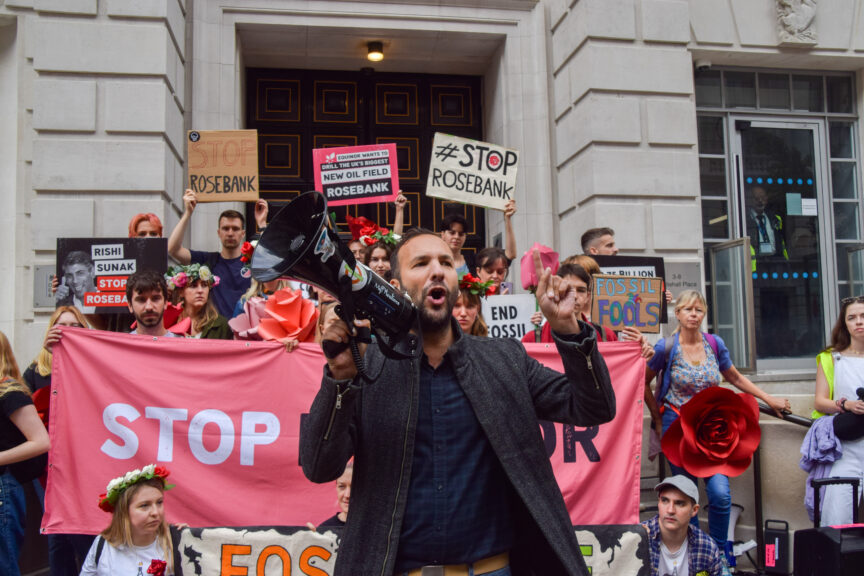
The Green party leadership contest, which began in May with deputy leader Zack Polanski announcing he was contesting the top job, is rumbling to an end. Most observers agree that Polanski will win on 2 September. Whatever happens, he will have transformed his party in the process, turning a slow-moving, conflict-avoidant political vehicle into a battleground of ideas.
This has unquestionably been a bruising leadership campaign. Things got off to a testy start, with Polanski’s rivals Ellie Chowns and the incumbent Adrian Ramsay insinuating that Polanski’s leadership bid was an ambush (responding to this, Polanski told Novara Media: “I think people need to be careful that there’s not an entitlement that they deserve to always hand the leadership to the next person waiting”). One anonymous senior party member accused Polanski of launching a “hostile takeover” – quite an allegation against the current deputy leader. Ramsay suggested that Polanski didn’t know how to win elections, an accusation Polanski described as “rude and disrespectful”. Pressed by LBC’s Iain Dale on whether or not he liked Polanski (with Polanski sitting right in front of him), Ramsay struggled to answer. In the Guardian, Chowns criticised Polanski for being “polarising”. Though generally avoiding bad-mouthing his rivals, Polanski has offered occasional barbs of his own, implicitly accusing his rivals of “briefcase politics”.
Some in the party see all of this as embarrassing or even divisive and damaging. But this squeamishness about internal conflict is a mistake. In fact, having a barney has been great for the Greens.
Firstly, for shallow reasons: it has generated a hell of a lot of media attention. In fact I’m not sure the Green Party has ever had so much coverage, particularly from the mainstream media. The Greens’ obsessive niceness has historically made the party boring to journalists. Polanski – the charismatic outsider running against the party establishment – is TV gold, and clips of his broadcast appearances do not infrequently go viral. Unsurprisingly, multiple broadcasters have held leadership hustings. The Today Programme aired a debate between Ramsay and Polanski in a slot usually reserved for grilling government ministers. National newspapers like the FT, the Times and the Telegraph have been forced to stop ignoring the party.
This media coverage has ratcheted up interest in the party among the wider public. July 2025 saw more Google searches for “the Green party” from UK users than any month in the previous 20 years. Meanwhile, the party’s membership has surged: while we won’t know exactly how much until the end of the contest, my educated guess based on information leaked to me from regional officers is that it’s passed 70,000. For a party that’s heavily reliant on member subs for its income (unlike the Tories and Labour, who have big donors and unions to fall back on), membership growth is likely to significantly increase the party’s resources and therefore its activities, likely leading directly to electoral gains.
Secondly, and probably more importantly, Polanski’s candidacy has forced the party to have a serious conversation about its strategy. In most parties, such discussions about style, tone and strategy are held in private, with overpaid communications consultants. Having the debate democratically in the open among members will produce a better answer. Polanski set out a clear case for what he calls eco-populism, centring his campaign on a demand for a wealth tax. Ramsay and Chowns have made clear arguments about the risks involved in that approach – potentially alienating culturally conservative voters who are concerned about the planet.
These strategic tensions have existed in the party for the whole time I’ve been a Green party member. The Polanski line is one which my friends and I have always taken – he’s not generated the division, just brought it out into the open so we can all talk about it, arguments can be tested and collective wisdom tapped.
Thirdly, the increased competition in this year’s contest seems to have encouraged more people to take part in down-ballot races. There are an extraordinary nine candidates for deputy leader, and many are impressive: Mothin Ali, Rachel Millward, Frank Adlington-Stringer and Ani Townsend have all caught my eye. The prominence of the leadership election has created space for a wider pool of Green talent to present itself. This growth in the talent pool can only be a good thing for the Greens.
Until relatively recently, the Green Party was remarkably small: until 2010, there were fewer than 10,000 members. While policy was hammered out on the conference floor, disagreements about strategy were expressed through quarrels between groups of friends. Often, people were afraid that the media would jump on divisions and ridicule the party over them.
But disagreement about how best to confront the polycrisis is healthy. The reason you have internal party democracy is so that every view can be heard and assessed, and members can make up their minds. And the consequence hasn’t been bitter division and ridicule. It’s been a spate of attention of the sort that the party spent years quietly craving.
From Novara Media via this RSS feed
A former U.S. ambassador has suggested that U.S. efforts to counter China have prompted the Chinese government to build up BRICS, the group of rising powers that is challenging the U.S.-led world order and drawing heavy criticism from Donald Trump.
Speaking at the Aspen Security Forum last month, former U.S. Ambassador to China Nicholas Burns, who now co-chairs the Aspen Strategy Group, said that Chinese officials have pushed to enlarge BRICS because they feel threatened by U.S. military alliances and NATO’s growing role in the Indo-Pacific.
“I think they were threatened,” Burns said, referring to the thinking of Chinese leaders. “I felt it in my bones as I talked to them over the last couple of years.”
Background
In recent years, China has led a major effort to expand BRICS, the network of countries that is gaining prominence for its growing influence in world politics. Since its formation in 2009, BRICS has worked to empower developing countries by reforming U.S.-dominated international institutions and creating alternatives to them.
The organization’s name derives from its four original members, which are Brazil, Russia, India, and China. After South Africa joined the group in 2010, it became known as BRICS.
Although BRICS remains an informal network, it has pursued ambitious goals. One is to reform global governance. BRICS aspires to provide more countries with a say over matters of war and peace by expanding the UN Security Council.
The organization has also sought changes to the global economy. Its leaders have questioned the status of the U.S. dollar as the global reserve currency. They favor a shift toward trade in other currencies, even proposing the creation of a BRICS currency as an alternative.
BRICS has posed a direct challenge to Western dominance of global financial institutions, such as the World Bank, International Monetary Fund, and SWIFT messaging system. It is developing alternative financial systems, including the New Development Bank, Contingent Reserve Arrangement, and BRICS PAY messaging system.
Since China began working to expand the group in 2022, BRICS has welcomed several additional members, including Egypt, Ethiopia, Indonesia, Iran, and the United Arab Emirates. Saudi Arabia may become an official member as well.
Due to its recent growth, BRICS has quickly emerged as a formidable force in world politics, accounting for 40 percent of the world’s population and 40 percent of the global economy.
Experts are divided over the implications of BRICS for the United States and the world, but they acknowledge its potential to wield tremendous influence.
“In a way, the United States peaked, its empire peaked, and it is now being challenged,” economist Richard Wolff, who hosts the weekly program Economic Update, said last month. “Pay attention to the BRICS.”
U.S. Positions
As BRICS has expanded, posing a growing challenge to the power of the United States in the world, officials in Washington have responded in different ways.
During the Biden administration, officials displayed little interest in BRICS. When they spoke of the organization, they were largely dismissive of it.
“We are not looking at the BRICS as evolving into some kind of geopolitical rival to the United States or anyone else,” National Security Advisor Jake Sullivan said in 2023.
Top spokespersons for the Biden administration shared the same mindset, insisting that BRICS was neither a threat nor a geopolitical rival.
President Donald Trump has taken a different approach, however. Since he won the 2024 presidential election, Trump has repeatedly called attention to BRICS, criticizing its goals and threatening it with tariffs.
Trump has expressed particular concern over the possibility of BRICS dethroning the U.S. dollar as the global reserve currency.
“The dollar is king,” Trump said last month. “We’re going to keep it that way.”
Still, Trump has not made BRICS one of his top priorities. Whenever he has criticized the organization, he has shown little understanding of its most basic features. The president has inaccurately claimed that Spain is a member of BRICS, repeatedly misstated the number of member states in BRICS, and falsely claimed that the organization “is dead” and “broke up” due to his tariff threats.
At one point earlier this year, Trump even acknowledged that he did not understand the relationship between China and BRICS.
“I don’t even know that they’re a member of BRICS,” he said, referring to China.
Getting Burned
Trump may have taken a different approach to BRICS than the Biden administration, but he has remained consistent on one key factor. The president has remained quiet about how U.S. actions toward China have played a role in the group’s expansion.
When former U.S. Ambassador to China Nicholas Burns spoke about his diplomatic experiences at the Aspen Security Forum last month, he noted with unusual candor that Chinese officials moved to expand BRICS because they felt threatened by the United States.
The United States, Burns explained, had been working closely with its allies in Europe and Asia to coordinate their approaches toward China, leading to growing concerns in Beijing about U.S. intentions.
Among the United States and its allies, there was consensus “about how to push back against China as well as work with it from the EU and NATO as well as the Indo-Pacific allies,” Burns said. “The Chinese felt threatened.”
Although Burns did not go into detail about U.S. actions, he gestured at two major U.S. policies that were undertaken by the Biden administration and remain in place today.
One is the reinforcement of U.S. military alliances in the Indo-Pacific. The United States is strengthening its hub-and-spoke model, which positions the United States as a dominant hub that exercises its power through several spokes, such as U.S. partners and treaty allies.
Another is the growing role of NATO in the Indo-Pacific. Although NATO is a transatlantic military alliance, U.S. officials have been pushing the organization to play a more prominent role in the Indo-Pacific for the purpose of countering China.
“What did they try to do?” Burns asked, after noting that Chinese leaders felt threatened by U.S. maneuvers. “They tried to build the BRICS up.”
Notably, Burns was largely dismissive of China’s actions, just as leading officials in the Biden administration had been. Burns argued that BRICS does not compare to the network of alliances that the United States maintains around the world.
“The BRICS isn’t a competitor to this incredible alliance system that every president has built up since the Second World War,” he said.
Still, Burns indicated that the United States should be careful. He expressed concern about the manner in which Trump constantly disparages U.S. allies, particularly his threats to their sovereignty.
“You can’t make our allies feel subservient to the United States,” Burns said.
Although Burns expressed confidence in U.S. power, including the Trump administration’s moves to confront China, his points about Trump, China, and BRICS brought several fundamental issues into the open.
One is that the U.S. foreign policy establishment remains highly concerned about Trump. Like Burns, many U.S. experts fear that Trump’s tactics may not only weaken U.S. alliances but also prompt more countries to join BRICS.
The more important issue, however, is that U.S. policies are threatening to China. Rather than facilitating peaceful cooperation among nations, the leaders of the United States are taking actions that are leading China to push back against the United States.
“The Chinese were threatened by the strength of the allies pushing together against them,” Burns said.
Indeed, the leaders of the United States are fully aware that their policies are prompting China to respond, just as it has been doing for the past several years by working to expand BRICS.
The post What Hunt Isn’t Telling You About BRICS appeared first on CounterPunch.org.
From CounterPunch.org via this RSS feed

Image by Felicia Buitenwerf.
“I do think it’s my job to be there and I do think that I need to model the behavior that I want our government to model.”
Nebraska’s Congressman Mike Flood had just gotten a tongue-lashing from constituents at a town hall meeting, facing tough questions and ultimately chants of “vote him out!” by Democrats angered by his support for Trump’s policies.
In an interview with NPR, Rep. Flood said, “I think it’s somewhat cathartic for them to be able to have the opportunity to address their representative government.” He explained that he tells the police before such events, “I do not want anybody removed or arrested. I want them to be able to say what they have to say. This part of the deal, this is the way people feel right now.”
As a community mediator, I had two reactions to his words.
First, I wanted to celebrate Rep. Flood for his insights.
Rep. Flood understands that these meetings are part of the job of elected officials in a democracy, and that it’s normal for meetings to get tense when so many people feel their concerns are not being heard. He also understands the need – especially for leaders — to de-escalate, rather than escalate, tense situations.
Second, I wished more people knew that public meetings do not have to turn out that way.
Town halls, as well as school board meetings and other public hearings, are an integral part of our democracy. However, the typical format tends to create conflict rather than understanding. People line up for a minute or two at the microphone. They direct concerns to officials often intimidatingly seated on a dais and often prohibited from responding – even to ask clarifying questions.
This approach helps no one. Citizens feel small and ignored, increasingly frustrated and angry. Officials feel attacked and without a constructive way forward.
That’s to be expected. We’re hardwired with a need to feel respected, connected to others, and treated fairly. When we don’t feel that way, our ability to think rationally decreases. We’re also hardwired to crave certainty. If we encounter an information vacuum, we fill it with (often incorrect) assumptions.
We can use this understanding of our neurobiology to design better meetings. When we feel validated and safe, our defenses come down and we can listen deeply, think creatively, and solve problems. That’s the state we want our town halls to put us in.
How? We start by reframing how we think of these meetings, into opportunities for listening and learning, engaging each other, and building trust between people and elected officials. We create meeting agendas that ensure people feel truly heard and respected, which in turn makes them feel secure, relaxed, and able to engage with each other. To do that, conveners can:
Poll communities in advance to create agendas based on peoples’ concerns
Engage skilled, nonpartisan facilitators able to establish norms of respect and guide a conversation enabling people to express themselves and hear each other
Reach out to a wide range of community members, or take town halls on the road to different parts of the community
Use live-meeting polling or small group discussions to take the temperature in the room and ensure that quieter folk still express themselves
Follow up with accessible reports on what was covered and subsequent actions
Officials can ask their local community mediation centers or other skilled facilitators for help. Our public meetings can become part of our way forward.
The post Turning Down the Temperature: How Town Halls Can Be Productive Again appeared first on CounterPunch.org.
From CounterPunch.org via this RSS feed
